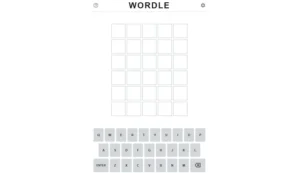 In the late 1990s, when “Harry Potter” books were all the rage, my son was in middle school. A boy in his class had one of those mothers willing to stand in a long line at a bookstore until midnight rolled around and the latest title in the series went on sale just so her son could be among the first to get one. A few days later, after he’d finished reading the book, the boy would come to school and tell anyone who would listen everything about it. Including the ending.
In the late 1990s, when “Harry Potter” books were all the rage, my son was in middle school. A boy in his class had one of those mothers willing to stand in a long line at a bookstore until midnight rolled around and the latest title in the series went on sale just so her son could be among the first to get one. A few days later, after he’d finished reading the book, the boy would come to school and tell anyone who would listen everything about it. Including the ending.
Nobody much liked that kid–or his mother, either–but that didn’t stop him from spilling the beans.
That’s kind of how I feel when someone drops even the slightest hint about the Wordle word-of-the-day. Though I’m relatively new to the game, having played it for less than a month, I’m hooked. And I don’t want anyone to ruin my fun.
Here’s how it works. Log onto nytimes.com/games/wordle/index.html. You don’t have to subscribe to the New York Times to play. The game is free for everyone. A picture will pop up on your screen, displaying six rows with five empty squares in each row. Below those squares is an electronic keyboard. When you touch a letter, it will appear in the first empty box (left to right) on the first empty row (top to bottom). You can change your mind by “x-ing out” any or all of the five letters you’ve chosen until you hit ENTER. Then your letters are locked in.
The point of the game is this: In six tries or fewer, figure out the word of the day. There are a million different strategies. You can start with any five letter word you choose, as long as it’s a real word. I like a balance of vowels and consonants, but not everyone does. Many players like to start with words like “adieu” or “audio” because they have four unique vowels.
Before I get out of bed every morning, I decide on my starter word. It might be a word from my dreams but it’s just as likely to be a word from my plans for the day. “Drive” if I’m going to town. “Store” if I’m grocery shopping. “Clean” if I’m resigned to vacuuming and dusting. “Piano” or “music” if I’ll have the radio going. (Hey… “radio” works, too.) So far, I’ve never re-used a starter word because where’s the fun in that?
Once you hit ENTER, your five letters will flip over. Green means you have the right letter in the right spot. Gold means the right letter in the wrong spot. Gray means the letter doesn’t appear in the winning word at all. The keyboard also color codes correct and incorrect guesses. Work your way across and down—letter by letter, row by row by row—with tension building as you near the sixth and final row.
It’s a thrill if and when all letters flip to green. And here’s what I like best about Wordle: Everyone in the whole wide world is searching for exactly the same word I’m searching for. In an age where so much divides us, that’s a victory.
The other cool thing about the “official” Wordle game is that you can only play it once in a 24-hour period, which makes it a minimal time suck unless you succumb to the Wordle archives or Wordle knock-offs or Wordle variations. So far, I’ve managed to resist these temptations. I’ve also resisted posting my results to Facebook, though many of my friends do. It’s fun knowing who plays and how quickly they solved the puzzle. What’s not fun is when someone slips up and gives a hint or tells the word outright.
In my book, that’s almost as bad as a spoiled sixth grade kid ruining “Harry Potter” for his classmates.
(March 26, 2022)